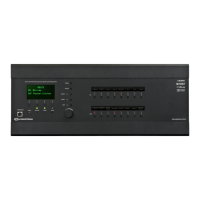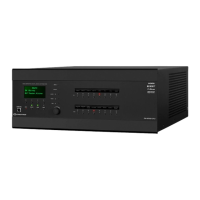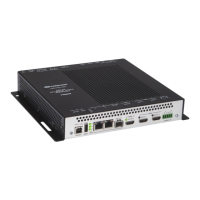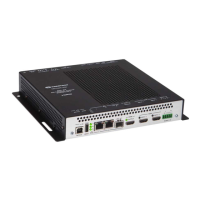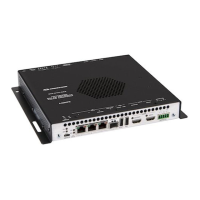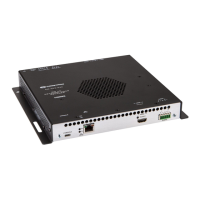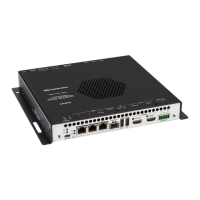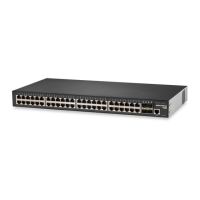Design Guide – DOC. 7977F DM NVX System • 37
Remote Authentication Dial-in User Service (RADIUS): A network protocol that
provides authentication, authorization, and accounting for network devices and users in
a secure way, especially for IEEE 802. 1x protocol, and deployed in a client-server model;
defined in IETF RFC 2865 and IETF RFC 2866
Request For Comments (RFC): A standards publication from the IETF
Real-time Transport Protocol (RTP): A network protocol for the actual delivery of audio
and video streaming media; defined in IETF RFC 3550
Rapid Spanning Tree Protocol (RSTP): A network control protocol for discovering and
accounting for network loops and redundancies; defined in
IEEE 802. 1d-2004
Real-Time Streaming Protocol (RTSP): A network control protocol for streaming media
to establish and control streaming audio and video sessions between endpoints; defined
in IETF RFC 7826
Secure Shell (SSH): A protocol utilizing cryptography that secures network services such
as a command line shell; defined across a number of IETF RFCs beginning with IETF RFC
4250 by the IETF SECSH working group
Structured Cabling: A standard for developing network and cable infrastructure; defined
in TIA/EIA-568
Symmetric Encryption: An algorithm or method of using cryptography such that a single
key is used for both the encryption and decryption of information to be protected
Transport Layer Security (TLS): A protocol implementing cryptographic security on a
computer network; defined in IETF RFC 5246 and IETF RFC 6176
Transport Stream (TS): A media format that encapsulates audio, video, synchronization,
and other information for transport; defined in ISO/IEC 13818-1
Universal Datagram Protocol (UDP): A protocol that transfers information over an IP
network in a connectionless way such that data delivery is not guaranteed yet prevents
the lack of a verified and established connection to prevent data delivery; defined in IETF
RFC 768
Unicast: A one-to-one delivery protocol that is simple but not scalable for multipoint
audio and video distribution
Virtual Local Area Network (VLAN): A nonphysically sequestered broadcast domain or
partition isolated at the data link layer, effectively sequestering switch ports and
network traffic across one or more switches from all other ports and traffic
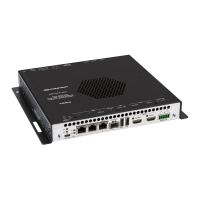
